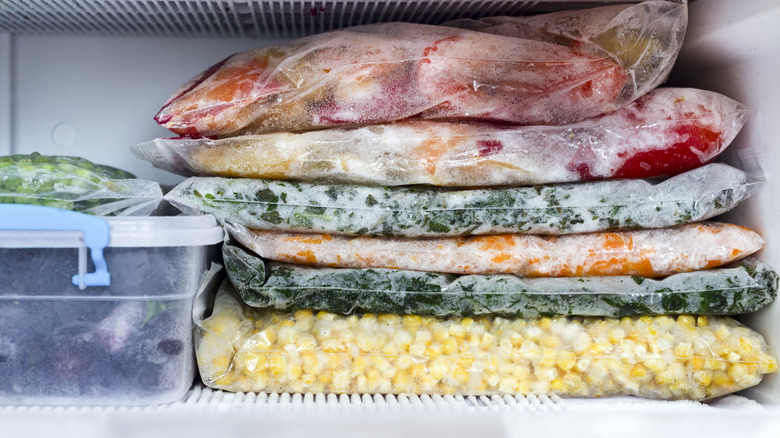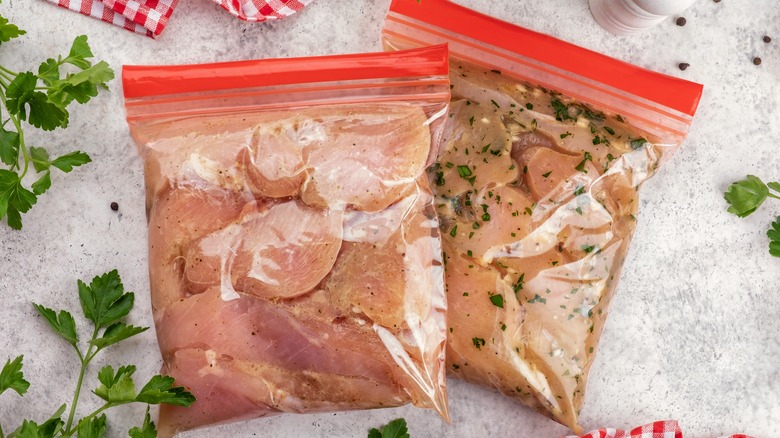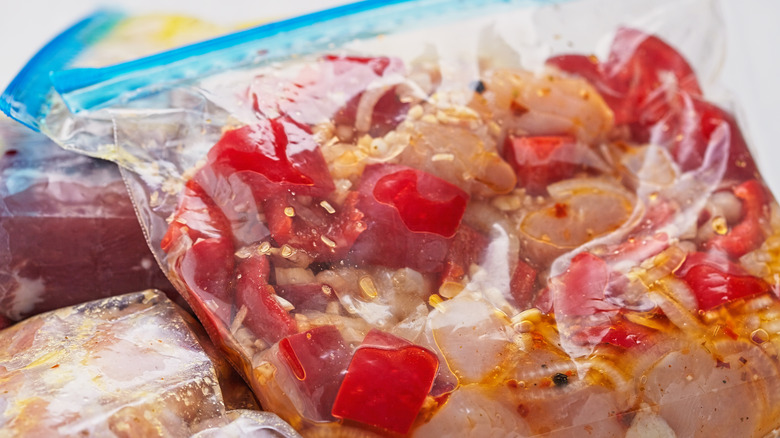Why You Should Always Lay Your Foods Flat Before Freezing
Whether it's to save leftovers and avoid food waste, or to meal prep and store ingredients in advance to make weekday dinners easier and faster, the freezer is a godsend for many households and home cooks (and means fewer trips to the grocery store, too). In fact, it's possible to live off the food in your pantry and freezer for weeks, if you're well-organized.
But well-stocked doesn't just mean full. How you prepare the food before it goes into the freezer, and how you store it once it's there, can have a huge impact. From the quality of the food once it's been frozen and defrosted to how easily you can find what you need to in a hurry, your specific storage method is key.
One of the simplest ways to improve the experience is to lay foods out flat and store them in zip-lock freezer bags. This not only means you can preserve food in smaller portion sizes for convenience, but it also makes the most of the available space. And that makes searching for, defrosting, and using frozen goods a breeze.
How to freeze food flat for more efficient storage
A freezer full of higgledy-piggledy boxes, cartons, and containers of all different shapes and sizes can make it a nightmare to actually find what you want in a pinch. Freezing food flat, however, makes for a much neater environment and means you can also maximize the storage space.
To best prepare liquid and semi-solid foods, such as stocks, soups, mashed bananas, or chili, transfer the contents into a zip-locked bag. For liquids, it's easiest to do this by keeping the bag upright, with the edge folded over so it stays firm. Then seal the bag most of the way, leaving about an inch unsealed. Next, gently squeeze as much air out of the bag as you can, then seal it fully, and push the contents into as flat a layer as possible. Label the bag with the contents and date, then store upright in the freezer until it's frozen solid.
For more solid foods, such as meat, fish, or chicken pieces, try to arrange the contents in a flat layer in the zip-locked bag, seal it most of the way shut, squeeze excess air out, and close completely before adding to the freezer (also labeled of course). Once all the foods are frozen solid, all the clearly labeled flat bags can then be neatly stacked on top of each other, or upright and next to each other like magazines, if you prefer.
Freezing flat means better-quality frozen food
Frozen foods can easily deteriorate over time, and there's nothing more disheartening than getting out a tub of leftover stew to heat up only to discover it's covered in ice crystals. The dreaded freezer burn effect is caused by air getting to the food. But freezing it flat, and having squeezed out the air from the zip-locked freezer bag, minimizes this risk, meaning the food stays in better condition.
Another advantage to this method is that it makes the food freeze faster, thanks to the flatter surface area. Even better, it's quicker to defrost, too. Placing a freezer bag of meat on an aluminum baking sheet, rather than a plate, will also speed up the defrosting process even more, since the material naturally conducts heat.
And as well as making it easier to find what you're looking for, freezing food flat and then stacking it means it's also more efficient to check the date labels, and move anything older towards the front, to be used sooner. The maximum amount of time that foods should spend in the freezer varies, from one or two months (sausages or bacon for example) to two to three months for soups or stews, and up to nine months for uncooked chicken portions (via USDA). But keeping a neat, well-organized freezer helps make it easier to see at a glance what you've got, and what needs using quickly.



